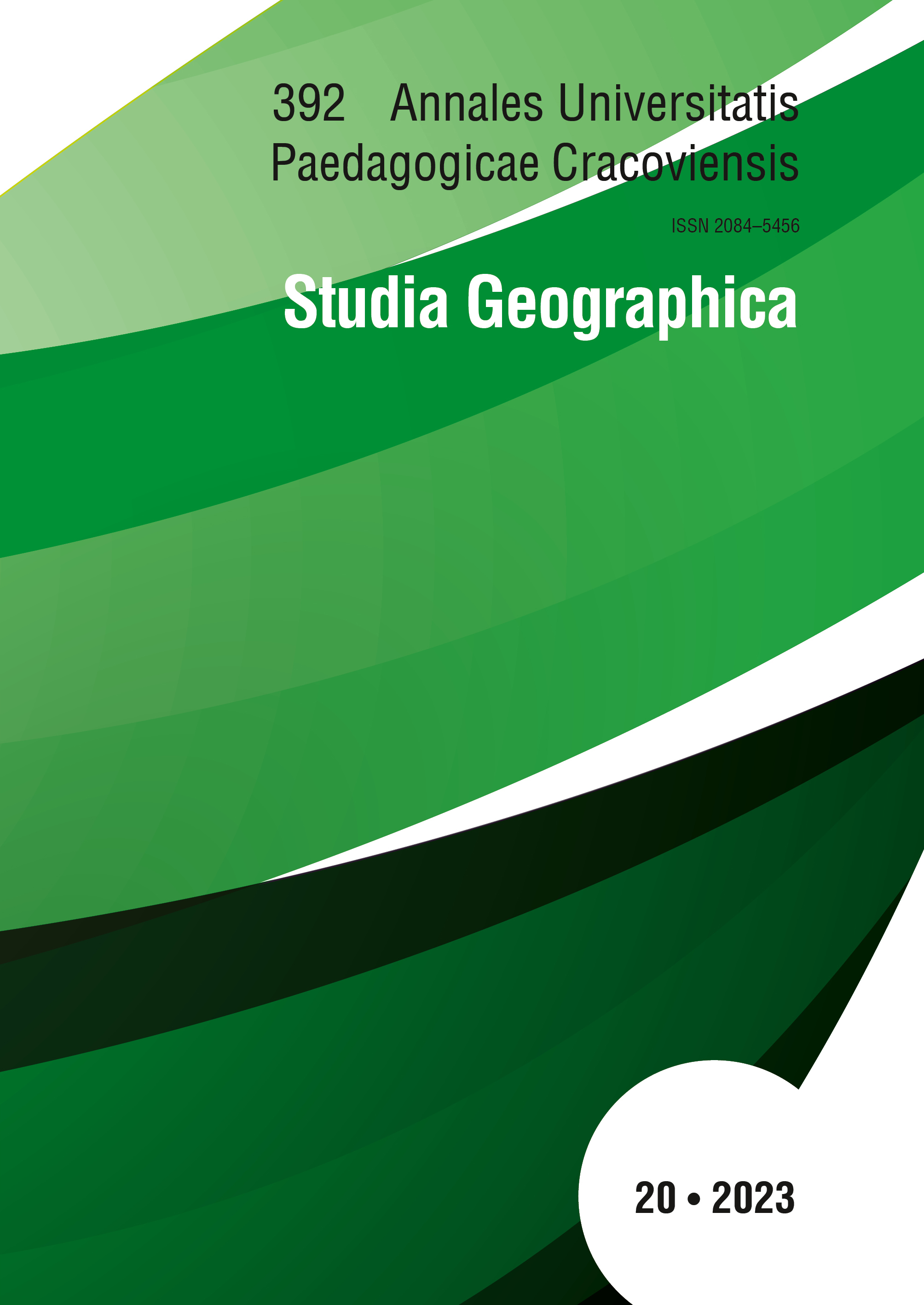Areas with agricultural suitability for corn cultivation State of Mexiconcy
DOI:
https://doi.org/10.24917/20845456.20.10Keywords:
Corn, fitness, MCE, modelAbstract
Ensuring access to food as a priority of the sustainable development objectives requires immediate attention to crops; motivated by this, the present study shows the results of the identification of agricultural suitability zones, specifically in the cultivation of corn in the State ofMexico, using the multi‑ c riteria evaluation (MCE) that allows tomodel the territorial reality and execute the spatial process with the most important variables in the growth those crops. The identification of the processes and their regional problems gave guidelines for the weighting of each of them and define their criteria for the optimal growth of the plant. The study was carried out with the assignment of weights to the variables of altitude, temperature, precipitation, slopes and edaphology according to research on their degree of influence and dependence among them; the result is the areas with the greatest agricultural suitability for the cultivation of corn in the State of Mexico (with restriction of protected natural areas and urban areas), with a timely verification of the already existing crops and improve decision making by expanding the territory with the greatest probability of optimization and crops’ yield. This methodology proposal is intended to be replicable to other crops and/or areas in which the processes and patterns that modify the characteristics of areas from a crop to high yield are recognized.
References
Aguilar Carpio, C., Escalante Estrada, J., & Aguilar, Mariscal, I. (2015). Analysis of growth and yield of corn in warm climate depending on genotype, biofertilizer and nitrogen .
Obtained from Terra Latinoam vol.33 no.1 Chapingo: https://www.scielo.org.mx/scielo.php?script=sci_arttext&pid=S0187‑ 57792015000100051#B15
Benjamin, J., Nielsen, D., & Vigil, M. (2014). Water Deficit Stress Effects on Corn (Zea mays, L.) Root:Shoot Ratio. Open Journal of Soil Science, 48.
Camacho, R. (2023). Verification versus validation in embedded software . Retrieved from ParaSoft: https://tinyurl.com/ursd59wc
Carrasco, A., Sanchez, N., & Tamagno, L. (2012). Agricultural model and socioenvironmental impact in Argentina: monoculture and agribusiness. Obtained from Universidad Nacional de la Plata, Argentina: http://sedici.unlp.edu.ar/handle/
/24722
Carro, Paz, R., & Gonzalez, Gomez, D. (2012). Location of facilities. Faculty of economics and social sciences. Obtained from the National University of Mar de Plata: https://nulan.mdp.edu.ar/id/eprint/1619/
CONABIO. (2022). Corn breeds in Mexico . Obtained from Mexican biodiversity: https://www.biodiversidad.gob.mx/diversidad/alimentos/maices/razas‑ d e‑ m aiz
General Directorate of Planning and Environmental Impact. (2022). Description of the State of Mexico. Obtained from the Ministry of the Environment and Sustainable Development: https://sma.edomex.gob.mx/sites/sma.edomex.gob.mx/files/files/
sma_pdf_cam_clima_2. pdf
ESRI. (2023). ArcGIS 10.8. Autonomous Mexico State University .
Fassio, A., Carriquiry, A., Tojo, C., & Romero, R. (1998). CORN: Aspects on phenology. Obtained from the INIA Technological Information and Dissemination Unit, Montevideo: http://inia.uy/en/Publicaciones/Documentos%20compartidos/
Galvez, Riquelme, V. (2016). Standardization and representation of geological hazard data at the national level. Obtained from Metropolitan Technological University: https://escuelacartografia.utem.cl/wp‑ content/uploads/2018/09/Normalizacion‑y‑ Presentacion‑ d e‑ D atos‑ d e‑ P eligros‑ G eologicos‑ a ‑ n ivel‑ N acional.pdf
IDRISI. (2020). Version TerrSet. Autonomous Mexico State University .
IEECC. (2021). The importance of agricultural suitability studies as adaptation tools to climate change in the State of Mexico. Obtained from the State Institute of Energy and Climate Change: https://ieecc.edomex.gob.mx/sites/ieecc.edomex.gob.mx/files/files/Pol%C3%ADticas%2 0P%C3%BAblicas/La% 20importance%20of%20studies%20of%20fitness%20agr%C3%ADcola%20as%20tools
%20of%20adaptation%C3%B3n%20al%20CC.pdf
IICA, Inter‑ A merican Institute for Cooperation on Agriculture. (2020). Technical Guide: Corn cultivation. Obtained from Inter‑ A merican Institute for Cooperation on Agriculture (IICA): https://repositorio.iica.int/handle/11324/11893
Downloads
Published
Issue
Section
License
Copyright (c) 2024 Annales Universitatis Paedagogicae Cracoviensis Studia Geographica

This work is licensed under a Creative Commons Attribution-NoDerivatives 4.0 International License.
The submission of a paper to be published is synonymous with an agreement to transfer the copyright free of charge from the author to the publisher. The author also agrees to permit the publisher to publish the paper in printed form, open access online form, digital library form and other digital platforms with which the publisher has or will have a publishing agreement. Furthermore, the author agrees to not limit the number of copies that may be printed or issued by the publisher. In the case of co-authored papers, it is assumed that the corresponding author is authorized to represent the remaining co-authors in this respect. Authors are requested to sign a copyright declaration.

